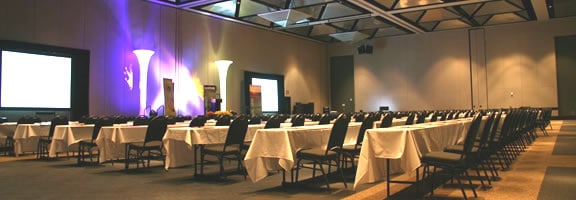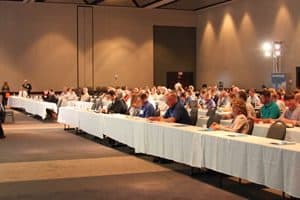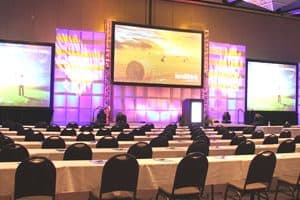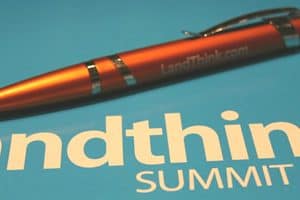The LANDTHINK Summit 2010 — September 30 at the Gwinnett Center in Duluth, Georgia — will address the good, the bad and the ugly in today’s land business.
Consider three recent items:
Jim Rinehart, president of R&A Investment Forestry which concentrates on managing and advising institutional investments in timberland, wrote in “U.S. Timberland post-recession: Is it the same asset?” (April, 2010) that timberland will continue to be a steady asset, but one that is likely to produce lower returns with higher risk than seen during the last 15 years or so. He thinks timberland as measured by the NCREIF Timberland Index has actually declined 15-20 percent in value, but the bulk of that decline has been masked by low transaction volume and the valuation process.
Conor Dougherty and Sara Murray report in the September 17, 2010 Wall Street Journal (“Lost Decade for Family Income”) that inflation-adjusted income of the median U.S. household fell 4.8 percent between 2000 and 2009. In the 2007 to 2009 period alone, median household income fell 4.2 percent. Recent declines follow a “long period in which incomes stagnated even through the recovery of 2003-2007.” Second-home sales, land purchases and residential real estate have been clobbered by middle-class income stagnation coupled with unemployment, underemployment and tightened lending standards.
P.J. Huffstutter in the September 19, 2010 Los Angeles Times (“Investors seeing farmland as safer bet than stocks”) reports that institutional investors and wealthy individuals are putting money into farm operations of all types because returns have outperformed stocks and the risks inherent in farming seem safer than those in equities.
But Michael Swanson of Wells Fargo’s Agricultural Industries Group warns that the combination of super-low interest rates and high crop prices have inflated land values, and a 1980s-type farm crash might reoccur as a result.
Is land a buy-now opportunity, a long-term neither-here-nor-there investment or a place to make respectable, though not, spectacular returns?
Find out this Thursday at the LANDTHINK Summit.
Here are two samples of what conference participants will hear.
Barry Gittleman, vice-president for land and strategy at John Wieland Homes and Neighborhoods, believes that distressed land presents a “huge opportunity” for investors.
He says: “In reality, 2009 and 2010 will probably be the best years during our lifetime to purchase a home of any type, if you take the time to do your homework and make sure you get a great deal.”
He would put his own money in bank-owned developed lots in Atlanta, “the closer to in-town, the better. There are lots being sold for less than the cost of development in some places, so the raw land is essentially free in those deals…. Other opportunities include raw land or developed lots in any city where I expect a strong economy in 5-10 years in locations or submarkets where I think they will be building new homes in 5-10 years. I would include parts of Raleigh and Charlotte on that list. And I would stay away from non-residential land, which I don’t think has bottomed yet.”
Brooks Mendell, founder of Forisk, advises small timberland investors to analyze a purchase in the following way:
“The recipe for analyzing timberland investments is straightforward, though it requires discipline and patience. First, understand the local wood market. Timber markets are uniquely local. The same timberland property in two different baskets will have two different values. In understanding the local basket, this goes beyond knowing all of the wood outlets into which you might sell trees. It includes knowing in advance how you will access these markets. Will you work through a forestry consultant? If so, who? Will you work directly with loggers? If so, who?
Second, question your forest data. In forestry, we have a somewhat bizarre relationship to data as compared to data for other assets such as bonds, equities or even commercial real estate. In forestry, everything is a sample. A forest cruise, which estimates the volume and value of the standing forest on a given property, is a sample of what’s out there. If we use data from the US Forest Service, it’s based on samples. If we use a timber pricing service, whether public or private, all reported prices are based on samples, not all transactions. So ask questions about the data.
Third, …know what’s knowable. In evaluating the value to you, the investor, you want to nail down, to the extent possible, what’s left over each year after revenues are generated and bills paid. That means being specific about what exactly will the property taxes be for THIS property, what are the annual management costs for THIS property, and what are the fees paid to consultants, accountants and lawyers to acquire and manage THIS property. Plus, fully explore the revenue potential for the timberland property, above and beyond forestry. Cell towers? Mineral rights? Kaolin? Hunting? Spiritual retreats?
We recommend to investors that they become familiar with their local markets first, and then patiently seek and evaluate timberland investment opportunities. This approach leads to building solid models with tested assumptions for buying properties. Then, when the numbers look good, move fast.”
Dan Hatfield, national president of the Realtors Land Institute, will discuss current and future legislation that will impact the land market. Craig King, president and CEO of J.P. King Auction Company, will describe how auctions have changed the land market. Jason Denton, vice-president of corporate lending at AgSouth Farm Credit, will talk about financing of timber and land investments. And Harry Mehre, of Jones Lang LaSalle, Tom Margo of AFM Land Sales and Brooks Mendell will form a timberland-investment panel.
Curtis Seltzer will face the question: Land Investing: Now or Later? He refuses to disclose his answer in advance of the Summit. I know because I asked.
For more information including the agenda, speakers, program and attending, visit the LANDTHINK Summit website at GetLandSmart.com.
This content may not be used or reproduced in any manner whatsoever, in part or in whole, without written permission of LANDTHINK. Use of this content without permission is a violation of federal copyright law. The articles, posts, comments, opinions and information provided by LANDTHINK are for informational and research purposes only and DOES NOT substitute or coincide with the advice of an attorney, accountant, real estate broker or any other licensed real estate professional. LANDTHINK strongly advises visitors and readers to seek their own professional guidance and advice related to buying, investing in or selling real estate.










Thanks for the information. I look forward to reading more.